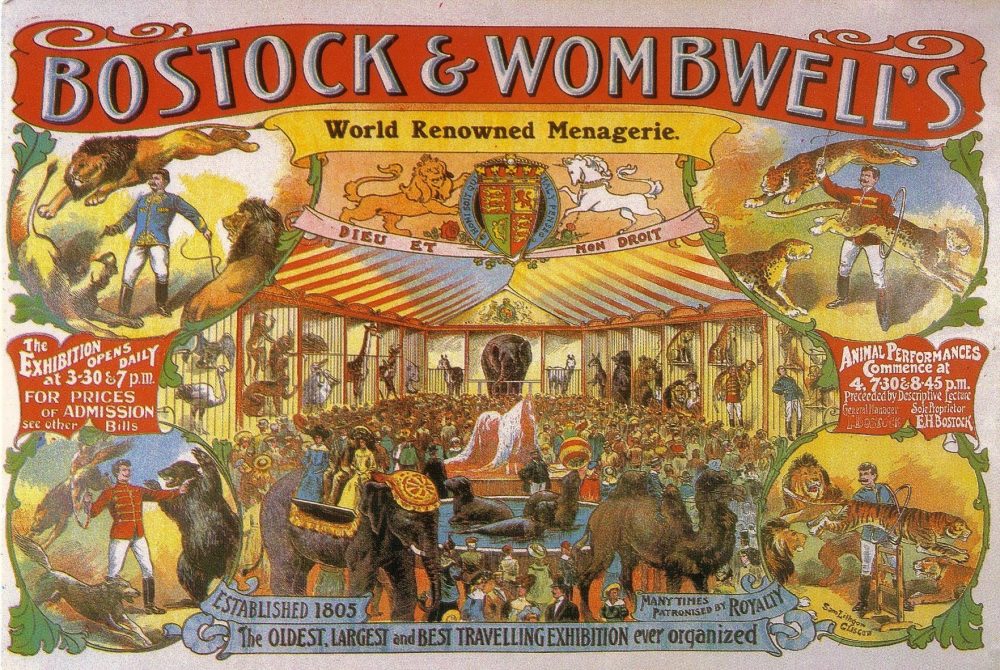I. Introduction
Travelling menageries were a prominent feature of British society during the 19th century, offering audiences the opportunity to encounter exotic animals from around the world. This literature review(without references) explores the multifaceted impacts of travelling menageries on British society, focusing on their social, cultural, and economic dimensions.
II. Historical Background of Travelling Menageries
Travelling menageries emerged in Britain during the late 18th century, capitalizing on public fascination with exotic wildlife and the growing interest in natural history. These exhibitions featured a diverse array of animals, ranging from elephants and lions to monkeys and birds, and were often accompanied by spectacle and entertainment. Menageries toured cities and towns across the country, drawing crowds eager to witness the wonders of the natural world.
III. Social Impacts of Travelling Menageries
Menagerie exhibitions provided a form of entertainment accessible to people of all social classes, offering a rare opportunity for individuals to interact with exotic animals. Working-class audiences, in particular, were drawn to menageries as a means of escape from the drudgery of daily life. However, debates surrounding animal welfare and ethical treatment also emerged, sparking discussions about humanity’s relationship with the natural world.
IV. Cultural Impacts of Travelling Menageries
Travelling menageries played a significant role in shaping British culture during the 19th century, influencing artistic expressions, literary works, and popular imagination. Artists and writers drew inspiration from menagerie exhibitions, incorporating exotic animals and scenes into their creations. Moreover, menageries contributed to the construction of narratives of exoticism and colonialism, reflecting broader cultural attitudes towards the “other” and the fascination with the unknown.
V. Economic Impacts of Travelling Menageries
As commercial enterprises, travelling menageries had a substantial economic impact on British society. Menagerie owners operated lucrative businesses, charging admission fees and selling souvenirs to patrons. The tours of menageries also provided economic opportunities for local communities, stimulating commerce and attracting visitors to towns and cities. However, the profitability of menageries was often precarious, with financial challenges leading to the eventual decline of the industry in the late 19th century.
VI. Methodological Approaches in Studying Travelling Menageries
Scholarly research on travelling menageries employs a variety of methodological approaches, including archival research, historical analysis, and cultural studies. Primary sources such as newspaper articles, diaries, and advertisements provide valuable insights into the experiences of audiences and the operations of menageries. However, researchers must navigate challenges such as biased representations and gaps in the historical record when studying this topic.
VII. Themes and Trends in the Literature
Existing scholarship on travelling menageries reveals several recurring themes and trends. Scholars have explored the intersections of entertainment, education, and exploitation in menagerie exhibitions, as well as the broader implications for understanding human-animal relationships. However, gaps in the literature persist, particularly regarding the perspectives of marginalized groups and the long-term legacies of menageries on British society.
VIII. Conclusion
Travelling menageries left a lasting imprint on 19th-century British society, influencing social interactions, cultural representations, and economic dynamics. Despite their eventual decline, menageries continue to fascinate scholars and enthusiasts alike, offering a window into a bygone era of exploration and spectacle. By examining the social, cultural, and economic impacts of travelling menageries, we gain valuable insights into the complexities of human-animal relations and the intersections of entertainment, commerce, and culture in the Victorian era.
